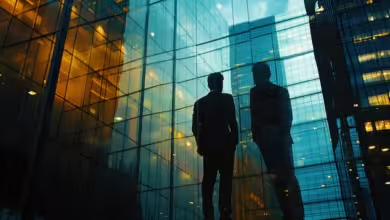Visions of Eternity: Art’s Depiction of Paradise and Hell Explored
Artistic representations of paradise and hell have served as profound expressions of humanity’s aspirations and fears, encapsulating our deepest beliefs about reward, punishment, and the afterlife. This expanded journey through art’s portrayal of these eternal realms not only highlights the contrasting visions artists have imagined but also enriches our understanding with additional examples that vividly capture the essence of paradise and damnation.
Envisioning Paradise
In the realm of art, paradise is depicted as a place of unparalleled beauty and serenity, embodying the human yearning for peace and fulfillment. The Renaissance brought forth lush, idyllic landscapes, as seen in Botticelli’s “La Primavera,” which, while not a direct depiction of paradise, echoes its themes with its depiction of harmonious nature and divine beauty. This painting symbolizes the rebirth of spring, often interpreted as an allegory for the paradise that awaits the virtuous.
The Darkness of Hell
Hell, in stark contrast, is portrayed as a domain of suffering and despair. Hieronymus Bosch’s “The Garden of Earthly Delights” offers a harrowing vision of hell in its rightmost panel, where the artist illustrates the grotesque punishments awaiting sinners. Bosch’s intricate detail and surreal imagery make it a compelling study of moral decay and the consequences of vice, serving as a cautionary tale of hell’s torments.
Cultural Visions and Variations
Artistic interpretations of paradise and hell are deeply influenced by cultural and religious narratives. The Persian miniature “The Court of Kayumars,” from the Shahnameh, illustrates a paradisiacal scene with the first king of the world surrounded by his court in a lush, heavenly garden. This depiction emphasizes harmony with nature, a key aspect of paradise in Persian literature.
Hell Across Cultures
In Eastern art, hell is often depicted with multiple levels or realms, each corresponding to different sins. The Japanese scroll painting “The Scrolls of the Hungry Ghosts” portrays one such realm, where beings suffer insatiable hunger and thirst as punishment for their greed and jealousy in life. These detailed representations serve to instruct and remind viewers of the moral laws governing the universe according to Buddhist belief.
The Influence of Religion
Religious texts and doctrines play a crucial role in shaping the artistic depictions of both paradise and hell. Michelangelo’s “The Last Judgment” in the Sistine Chapel vividly brings to life the Christian Day of Judgment, where the saved ascend to heaven while the damned are cast into hell. This masterpiece encapsulates the finality of divine judgment with a dramatic intensity that has influenced countless works of art.
Symbolism in the Depiction of Afterlife
Artists have long used symbols to convey the complexities of paradise and hell. In “Paradiso,” part of Gustave Doré’s illustrations for Dante’s “Divine Comedy,” the use of light symbolizes divine love and wisdom, guiding the souls towards paradise. Doré’s engravings, with their intricate details and emotive contrasts, beautifully capture the journey of the soul through the afterlife.
The Baroque Interpretation
The Baroque period added drama and emotion to the portrayal of these eternal realms. Peter Paul Rubens’ “The Fall of the Damned” dramatically depicts the descent of the damned into hell with chaotic energy and tumultuous movement, emphasizing the horror and despair of damnation. Rubens’ mastery of light and shadow intensifies the dynamic scene, making it a powerful representation of hell’s fury.
Modern Perspectives
In modern times, artists have explored paradise and hell through more personal and abstract lenses. Marc Chagall’s “The Fall of the Angel” merges elements of the personal with the biblical, presenting a whimsical yet poignant exploration of downfall and redemption. Chagall’s use of vibrant color and floating figures transcends traditional narratives, inviting a reflective interpretation of the themes.
Composition and Symbolism
The composition of “The Fall of Lucifer” is meticulously designed to guide the viewer’s eye through the chaos of the fall, from the serene heights of heaven to the tumultuous depths of hell. Symbolic elements, such as broken chains and falling angels, reinforce the themes of rebellion and downfall, while the use of fiery colors and dark shadows conveys the intensity of divine wrath and the anguish of the fallen.
Historical and Cultural Context
Understanding the historical and cultural context in which “The Fall of Lucifer” painting was created adds depth to our appreciation of the work. This painting reflects the theological and philosophical debates of its time, exploring the nature of free will, sin, and redemption. It also serves as a commentary on human nature, using the fall of Lucifer as a metaphor for the potential for greatness and the capacity for self-destruction inherent in humanity.
“Dante and Virgil in Hell” by William-Adolphe Bouguereau
William-Adolphe Bouguereau’s “Dante and Virgil in Hell” brings to life a scene from Dante’s “Inferno” with vivid realism and emotional intensity. The painting captures the moment when Dante, guided by Virgil, witnesses the torments of the damned, highlighting the human emotions of fear and pity amidst the horrors of hell.
“The Garden of Eden” by Thomas Cole
Thomas Cole’s “The Garden of Eden” presents a lush, tranquil vision of paradise before the fall of man. This painting, with its detailed natural beauty and sense of innocence, evokes a paradise lost and the longing for a return to a state of grace, reflecting the Romantic era’s fascination with nature and the divine.
Conclusion
The exploration of paradise and hell in art serves as a mirror to humanity’s perennial concerns with morality, fate, and the afterlife. Through the ages, artists have crafted vivid depictions that not only reflect the values and beliefs of their times but also offer timeless insights into the human condition. From the serene gardens of paradise to the infernal depths of hell, these artistic creations continue to captivate and provoke, inviting us on a visual journey through the ultimate contrasts of existence.



